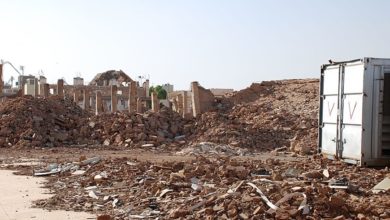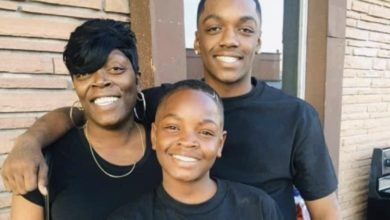One year after Hurricane Katrina devastated the Gulf coast, New Orleans still lies in ruins with rebuilding efforts moving at a glacial pace. Hundreds of thousands of people remain displaced, spread out all over the country. More than 250,000 displaced people are living in Texas, 100,000 in Georgia and 73,000 within miles of New Orleans in Louisiana.
Some have settled permanently into their new environment. Many others are destitute and without federal assistance.
 |
Instead, the government has pursued rebuilding policies that promote gentrification of New Orleans, making it impossible for a large section of the majority Black and working class population to return. Vital city services still remain in turmoil. Vast sectors of the population lack affordable housing and medical care. Meanwhile, politicians have turned the school system into a test case for the charter school movement.
The sum total of this has made New Orleans a model for capitalist cleansing of the oppressed, working class communities and rebuilding for the rich. The destruction of New Orleans by Hurricane Katrina provided a vehicle for the permanent removal of wide sectors of the existing population, which was, until then, the major brake on gentrification.
Housing for those who remained in New Orleans and for the few who have returned is an acute crisis. Over 40,000 renters lost their apartments in Katrina, many of which were severely damaged. Among undamaged rental units, rents have increased by up to 300 percent, pricing most previous occupants out of the market.
In response, New Orleans Mayor Ray Nagin, a wealthy former cable TV executive, shamelessly excused the rent increases, saying, “It’s supply and demand. There are demands for apartments now.” Nagin has never shied away from wholeheartedly supporting the ruling class’s notion for a “new New Orleans.”
New Orleans residents who own homes damaged by Katrina are not faring much better. On Aug. 16, a federal judge in Mississippi absolved insurance companies of responsibility for flood damage. Insurance companies claimed that since flood damage was not specifically outlined in the owners’ policies, the companies were not liable. Desperate homeowners argued that the companies were, in fact, liable because they marketed themselves as covering flood damage. In their fierce competition for customers, insurance companies often use deceptive marketing strategies to win customers, including vague and misleading claims.
This pro-rich ruling will save the insurance industry vultures billions. The federal government, which is supposed to pick up the tab for uninsured flood damage, has allocated $10 billion to the Community Development Block Grant program for this purpose. But not even one dollar has been distributed to the more than 100,000 people who have applied for reimbursement.
Donel Sims, whose house was destroyed by Katrina, returned to New Orleans months ago to try to rebuild. “I live in my yard,” Sims, 47, told BlackAmericaWeb.com. “And I take baths out of a bucket. I lost everything.”
Sims said he has not worked consistently since he returned and cannot afford the city’s skyrocketing rents. He said a nearby apartment that once rented for $600 a month is now $1,200.
“It’s not fair,” Sims said. “We can’t afford an apartment.” Sims isn’t alone. Thousands of returning families, mostly African American, have nowhere to live.
Meanwhile, the Department of Housing and Urban Development is spending millions to bulldoze thousands of undamaged public housing units in order to “redevelop” the land for the benefit of private contractors. Four out of 10 of the city’s largest public housing developments will be demolished, evicting 3,000 residents onto the streets,
The allocation of funds to destroy livable, subsidized housing while over 100,000 people get nothing to rebuild their homes lays bare the gentrification intentions of the government and its capitalist bosses.
Profits dominate rebuilding efforts
The health care situation is equally grim. Over half of the hospitals that were open pre-Katrina have are now closed, including Charity Hospital, the largest public hospital in the state. In addition, many of New Orleans’ medical professionals were displaced after the storm. It is unclear when they will return or where they will work if they come back. The fragile health care situation in New Orleans could potentially get even worse.
The state has spent more time trying to criminalize health care workers than funding or supporting their work. Louisiana’s attorney general recently accused a heroic doctor and two nurses of second degree murder, although they stayed after Katrina hit to help patients in flooded, unsanitary hospital rooms.
Greedy corporations have also been carting in undocumented immigrants to reconstruct New Orleans. After recruiting these oppressed workers in other states, the companies bring them to New Orleans where they get paid a pittance for backbreaking, often very dangerous construction work. Many of the immigrant workers are forced to live in tent cities or mud huts in the surrounding areas. In some places, they have to pay five dollars to use public showers. By exploiting the unstable status of the immigrant workers, the corporations massively profit from their work.
The New Orleans education system has also become essentially privatized. It is now predominately a laboratory for
|
At present, students are enrolling in schools under three separate education authorities: five schools will be controlled by the city’s pre-hurricane school board, 17 by the state’s Recovery School District, and 33 will be charter schools. The state-run RSD estimates it will only have 60 percent of the teachers that it needs for the year, and the 17 schools will collectively have a total of only 10 administrative staff.
Charter schools receive public money, but are privately run. Although relatively few existed in New Orleans before Katrina, they now dominate the education landscape. Various local and national groups have been able to get government funding and accept students for the 33 charter schools. But charter schools can accept or reject who they see fit, pushing the excess students into the smaller city- and state-run districts, which are obligated by legal mandate to make space.
This tangled and multi-agency attempt at “public” education provides little accountability and opens the door to exploitation of students by profit-driven private education companies. Charter schools also take much-needed funds away from the resource-starved public schools, which will have difficulty serving students rejected by the charter system. Those rejected will likely be the most downtrodden or students with learning disabilities who require constant assistance and attention.
Capitalism to blame
The federal government claims it has allocated $110 billion for Katrina-related rebuilding. What has happened to all of this money?
The Los Angeles Times reported on Aug. 27 that only $44 billion has been spent so far. This alone is criminal. The Bush administration blames government bureaucracy for the holdup in spending. This is a lie. Nearly 20 times this amount goes to fund the Pentagon war machine each year.
But no matter how much money is allocated or spent by the government, we know that the primary beneficiaries won’t be the working class. Of the billions spent, much has gone to pay for no-bid contracts awarded to big capitalists with major ties to the Bush administration and politicians of both parties in Congress. The atrocious waste inherent in this process is obvious. For example, a trucking company in Florida received a $579 million contract for debris removal, despite the fact it didn’t own even one dump truck.
When Katrina hit, the government was correctly accused of racism and criminal neglect. Then we saw tens of thousands of evacuees get their meager FEMA assistance cut off. Now we see the rebuilding process benefiting only the capitalist class at the expense of all workers.
What these tragedies have made manifest is how the capitalist system works—and how it doesn’t work if you are a worker or from an oppressed background. It only works for the owning class, the bosses and their managers, the politicians in Washington.
The small, island country of Cuba has proven that more than one million people can be evacuated during intense hurricanes and tropical storms with very few casualties. The United States, however—a much larger country with far more material resources at its disposal—continues to have no rational evacuation plan for people in storm-ridden areas with high populations, a pressing need as hurricanes increase in frequency and strength.
This is because the capitalist system cares only about the tiny minority who own and control Wall Street corporations and not about the welfare of working class people. In direct contrast, the Cuban socialist system is based on planning for the benefit of the working class, the vast majority of people. It is a priority for the Cuban government to plan for mass evacuations from hurricane-vulnerable areas, whereas human safety is only an afterthought for the capitalists in Washington.
That’s why New Orleans isn’t being rebuilt with speed or efficiency, except for casinos and some of the tourist areas. It has fallen prey to speculators and exploiters who desire to create a city with much of its African American population removed.
But the struggle to rebuild New Orleans and to bring justice to Katrina survivors is far from over. The people of New Orleans and the Gulf region aren’t going away without a fight. Thousands of people are organizing resistance to the capitalists’ plans. They’re working each day to rebuild the city, to stop unlawful evictions and to keep subsidized public housing available in New Orleans.
This week, on Aug. 29, activists from across the nation are gathering in the city to commemorate the Katrina tragedy and to rejuvenate the political struggle for justice. The effort is being led by the United Front to Commemorate the Great Flood, a coalition of organizations who have worked in and around New Orleans over the past year.
Hardworking volunteers have traveled to New Orleans to help people rebuild their homes. Organizations like Common Ground Collective have been rebuilding with some, but relatively few, resources at their disposal.
At minimum and immediately, the myriad government agencies controlling the rebuilding of New Orleans and the region should be abolished. Administration over the current rebuilding efforts should be governed by a representative survivors’ council of displaced and returned people. This council could decide how to disperse money and rebuilding contracts and what would be rebuilt.
Empowering the people affected by Katrina to rebuild their city and region would be a victory in the overall workers’ movement.







